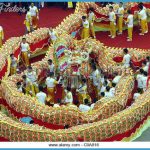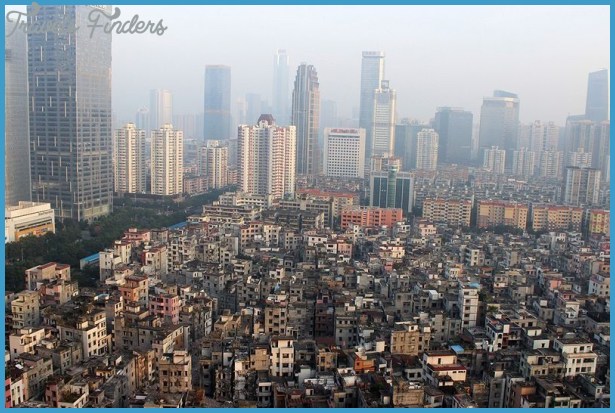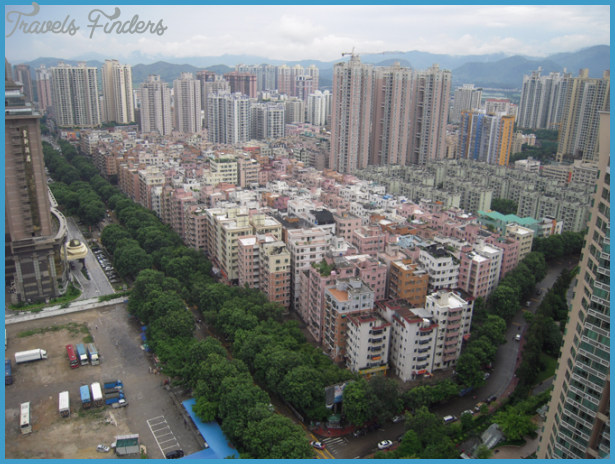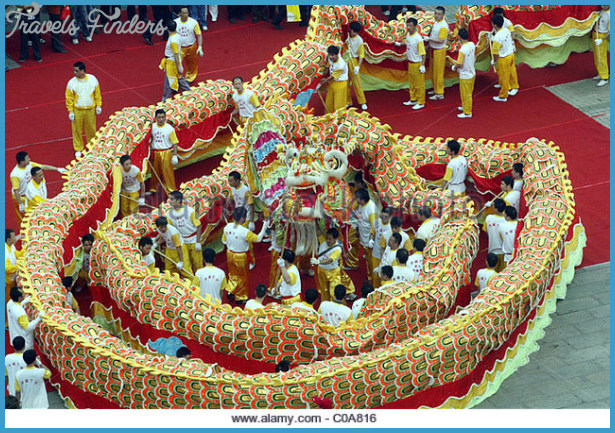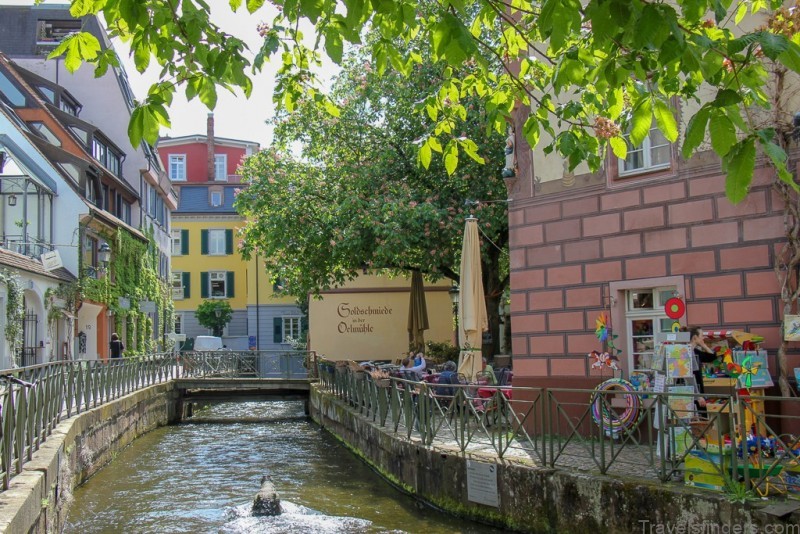Situated just west of the Futian CBD, Xia Sha Village is one of Shenzhen’s remnant urban villages. It has an unenviable if justified reputation as one of the centres of Shenzhen’s sex trade. It has row after row of buildings lining its narrow streets advertising leisure establishments. But it is also one of the places where Shenzhen’s ancient and modern history is most accessible. Don’t worry about the leisure establishments. There are plenty of families around and it’s quite safe.
Xia Sha Village has 800 years of history. Its founder, Huang Motang, came to Shenzhen in the 13th century and soon the village which he founded became a clan village with just about everybody having the surname Huang or Wong or Ng, depending on whether they were Cantonese or Hakka speakers. After Reform and Opening in the 1980s and the explosive growth of Shenzhen, the villagers developed the land in the village and became collectively extremely rich. They then decided to preserve something of the history of the area and to build a museum to commemorate their traditions.
In the centre of the village a large public square has been built. This comprises public facilities such as sports fields and a swimming pool, a park with sculpture and the original Temple and Ancestral Hall of the Huang clan. Facing the square is a museum of the village.
The ancestral hall is typical of such halls in the Pearl River Delta region, although our impression is that it is on a larger scale than most. It was originally built in the 16th or 17th century in the late Ming Dynasty, but the current building is in the style of the mid Qing Dynasty 18th-19th centuries. It has three large halls with the family’s ancestral tablets displayed in the back hall. It was fully restored with the support of the city government in the mid 1990s and is designated as a recreation facility for the elderly. It is a fine example of its kind.
The Daoist temple is well maintained. The current building dates from the 1830s. The deities here are Chen Hao and Yang Hao. Yang Hao Yang Liangye is interesting because he is another of the many remnants of the fall of the Southern Song to be seen in the Pearl River Delta area. Yang Liangye was a maternal relative of the last Southern Song Emperor.
The public square is pleasant. It has a sculpture garden with statues of various manifestations of the Buddha including a sleeping Buddha, a laughing Maitreya Buddha and a Guan Yin Amitabha. Reflecting the eclectic nature of Chinese folk religion, there are also statutes of the Daoist Eight Immortals on an island in a small lake. A large statue of farmers wearing traditional Hakka clothes and carrying sheaves of grain overlooks the scene. The square is large enough to carry the enormous crowds of Huangs who each year come to the enormous Deep Wok dinner celebration, of which more below.
The museum is one of the more interesting sites in Shenzhen. It traces the history of the village from its establishment in the early 13th century to today. The first exhibits are about the ancestry of the villagers. The founder of the village, Huang Motang, was a senior official of the Southern Song Dynasty. In typical scholar-official fashion, he left public life and retired to Guangdong with his family. An interesting sideline to the story of Huang Motang is that the Emperor thought so highly of him that, in 1248, when Huang died, the Emperor decreed that Huang be granted a tomb. The tomb, which is in the two-tower style, still exists on the northwestern slopes of Lianhua Mountain Park and is the only example of its type in Guangdong. It is not easy to find. There are no signs to it and it is unlikely that the casual visitor will be able to find it.
The museum has dioramas of the village in the 18th and 19th centuries and exhibits on agricultural life of the period including agricultural implements. It lists all the village leaders since the communist victory in 1949. This is noteworthy for several reasons. Firstly all the leaders have the surname Huang. Many people are surprised at this, but it is very common in Chinese villages. Many people think that this is because of inbreeding. This is not necessarily the case.
The reason for this shortage of surnames is the phenomenon of genetic drift. Research into mitochondrial DNA, which is passed in the female line, shows that all Europeans are descended from seven women 30,000 years ago. This does not mean that there were only seven women 30,000 years ago. It means that all the other female lines have died out and only seven remain.
The equivalent of this in the male line is the Chinese surname. Chinese surnames are the oldest in the world with 5000 years of history and, like female DNA lines, have tended to die out until today there are only the famous hundred surnames. Most of the surnames which we read about in Confucius 6th century BC no longer exist.
This factor, combined with the Chinese practice of having wives live with the families of their husbands, has led to the modern situation of many villages having only one surname.
The list of village elders in the museum is also politically instructive. The elders are called Village Head until 1963 when Xiasha became a Production Brigade of a Peoples Commune this was very late for conversion to a commune which in other parts of China took place in the late fifties. In 1978, when the communes were abolished, the Head became an Administrator. And in 1992 the village demonstrated its acceptance of Deng Xiaoping’s To get rich is glorious philosophy by incorporating itself as a limited liability company. The village head then became Managing Director of the incorporated village.
The museum also concentrates on the Xia Sha Deep Wok Dish feast. The deep wok dish feast is a common southern custom. At the Lantern Festival, which marks the end of the Chinese New Year holiday, clan members of the same surname often gather to eat a meal that in some ways is similar to a French cassoulet. It involves 12 layers of delicacies cooked in layers in a large wok and served to communal tables.
The Xia Sha Deep Wok is on a much larger scale than most such feasts. It grew explosively in the 1990s. In 1995 it comprised 4,000 people at 550 tables. By 2001 it had grown to 50,000 people at 3500 tables and in 2002 it entered the Guinness Book of Records as the world’s largest feast with 60,000 people at 3,800 tables. The museum faithfully records that there were 1500 lbs of clams, 16,000 lbs of turnips, 7,800 lbs of pork, 1,140 lbs of ginger and 2,800 bottles of soy sauce.
Address: Xiasha Village, Binhe Freeway, Futian Metro: Che Gong Miao a 10 minutes’ walk south
Buses: J1, 26, 34, 47, 64, 76, 80, 103, K115, K113, K204 bus stop Xia Sha








